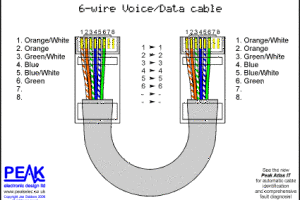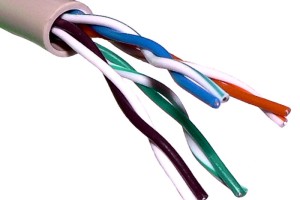Cable Damage: Causes and Effects
In the realm of structured network cabling, there are many opinions about what causes cable damage, and what issues that damage can lead to. Though industry standards and scientific testing can tell us a great deal about this subject, the beliefs held in the cabling community do not always reflect the research. It makes sense in a technologically heavy field that there are constantly new innovations and tools to deal with, and in network cabling, there is a wide range of generations and types of cables. As cables are designed and used for more complicated functions and have more components and parts, the damage possibilities expand as well. What are the causes of these damages? And what are the possible repercussions of cable damage?
In the most simplistic terms, networks cables are composed of metal wires – often copper -that are run or twisted together. These wires conduct electrical and data-based currents and carry signals from one end to the other. In the case of optic fiber cabling, instead of wire, the cords are run with thinly stretched glass strands, made at a very high heat. These wires are sometimes individually coated, and are always externally coated in some form of plastic. In some cables there is also a metal netting between the plastic coat and the internal wiring. Although there is a range of complexity, it is clear that most network cabling is made of a variety of parts. Because of this complicated nature, it is often difficult to diagnose what exactly has gone wrong with a malfunctioning cable. For example, there are network cablers who stand strongly behind the opinion that bending or folding a cable does not cause signal noise or degradation. One of the many benefits of cable construction is malleability. Signals can be run through involved blueprints, around corners, over and through barriers. However, if a cable is bent, or folded directly in half, what are the consequences? Especially if this external torquing of the cable effects the internal wiring, signal frequency can become effected, if not immediately, then eventually. A fold in conductive wiring can change the flow of heat and energy along the wire this wearing out one section before another and causing more noise between wires inside a single cable.
If network cabling has a torn coat, or jacket, this too can effect the performance of the cable at hand. While the jacketing is just that- and external coat, it is placed there for a purpose beyond esthetics. The internal wiring of a network cable is the real guts of the operation. The wires do the real work. The plastic coating, however serves to hold those internal mechanisms together. Much like skin on the human body, jacketing protects the inner processes from external environmental radicals. If there is a tear in the outer coat, the wires will function under varying temperatures and will be exposed to unknown elements, such as dust and moisture. These outside elements certainly effect the functionality of the cable. Just like over stacking or over bundling cable together can squish or crush the data wiring inside certain cables, external damage to a network cable certainly effects the performance.




